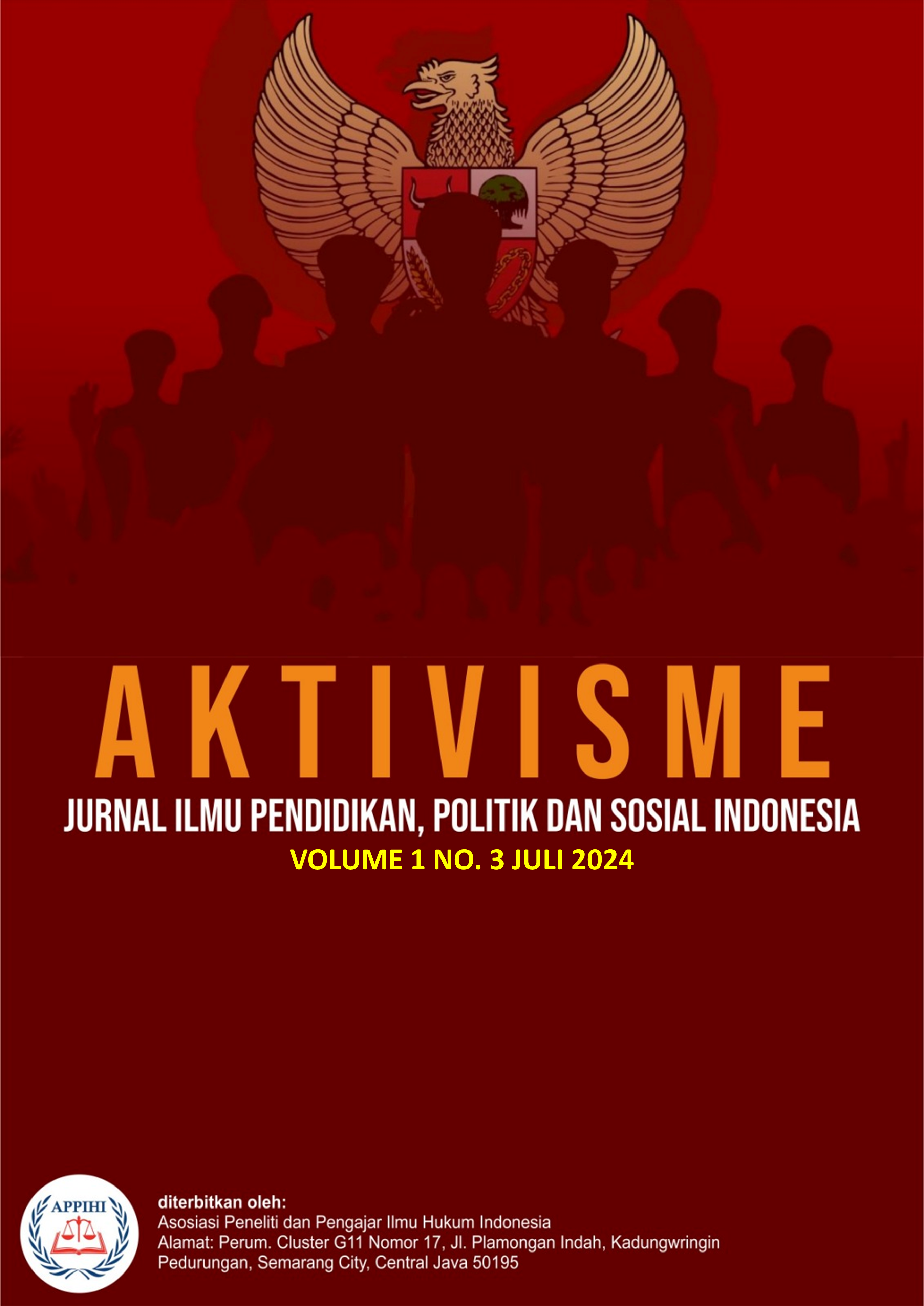Penerapan Pasal 27 Convention On The Rights Of Persons With Disabilities 2006 Dalam Undang-Undang Nomor 8 Tahun 2016 Tentang Penyandang Disabilitas
DOI:
https://doi.org/10.62383/aktivisme.v1i3.340Keywords:
Convention On the Right of Persons with Disabilities 2006, Disability Rights, EmploymentAbstract
Article 27 letters (g) and (h) of the 2006 Convention on the Rights of Persons with Disabilities regulates that state parties must employ persons with disabilities in the government sector and promote employment for persons with disabilities in the private sector through appropriate policies and measures which may include concrete action programs, incentives and other steps. Based on data from the Ministry of Manpower in 2021 and 2022, less than 1% of people with disabilities can work in the public and private sectors. The main problems in this research are: How is Article 27 of the Convention on the Rights of Persons with Disabilities 2006 implemented in Law Number 8 of 2016 concerning Persons with Disabilities; What is the solution to the weakness in implementing Article 27 of the 2006 Convention on the Rights of Persons with Disabilities in Law Number 8 of 2016 concerning Persons with Disabilities. The theories used in this research are the theory of monism and the theory of legal positivism.The type of research used in this research is normative legal research. Normative legal research is a process of finding legal rules, legal principles and legal doctrines to answer the legal issues faced. This research focuses on legal synchronization, namely examining the harmony of positive law (legislation) so that it does not conflict based on the hierarchy of laws and regulations.The results of this research are that the implementation of Article 27 of the Convention on the Rights of Persons with Disabilities 2006 in Law Number 8 of 2016 concerning Persons with Disabilities has weaknesses, where none of this law regulates sanctions for the government, regional governments, State-Owned Enterprises, Regional-Owned Enterprises and private companies that do not meet the quota for disabled workers as regulated in Article 53 of Law Number 8 of 2016 concerning Persons with Disabilities. Therefore, the government needs to formulate government regulations as soon as possible as implementing regulations for Law Number 8 of 2016 concerning Persons with Disabilities, so that there is legal clarity and certainty, especially for law enforcers and people with disabilities.
Downloads
References
Abdullah, Rozali. 1996. Hukum Kepegawaian. Jakarta: Rajawali Press.
Adolf, Huala. 2002. Aspek-aspek Negara dalam Hukum Internasional: Edisi Revisi. Jakarta: PT. Rajagrafindo Persada.
Affandi, Hernandi. 2013. Hak Asasi Manusia, Pemerintah yang Baik dan Demokrasi Indonesia. Bandung: CV. Kencana Salakomodamas.
Asikin, Zainal. 2012. Pengantar Ilmu Hukum. Jakarta: PT. Raja Grafindo Persada.
Bahar, Saafroedin. 2002. Konteks Kenegaraan Hak Asasi Manusia. Jakarta: Pistaka Sinar Harapan.
Bantekas, Ilias, Michael Ashley Stein, dan Dimitris Anastasiou. 2018. The UN Convention on the Rights of Persons with Disabilities: A Commentary. United Kingm: Oxford University Press.
Budiarjo, Miriam. 2008. Dasar-dasar Ilmu Politik. Jakarta: Gramedia Pustaka Utama.
Davidson, Scott. 1994. Hak Asasi Manusia: Sejarah, Teori, Praktek dalam Pergaulan Internasional. Jakarta: PT. Temprint.
Donnely, Jack. 2013. Universal Human Rights in Theory and Practice. New York: Corneniversity Press.
Effendi, Masyhur. 1994. Dimensi dan Dinamika Hak Asasi Manusia dalam Hukum Nasional dan Internasional. Jakarta: Ghalia Indonesia.
Downloads
Published
How to Cite
Issue
Section
License
Copyright (c) 2024 Aktivisme: Jurnal Ilmu Pendidikan, Politik dan Sosial Indonesia

This work is licensed under a Creative Commons Attribution-ShareAlike 4.0 International License.





